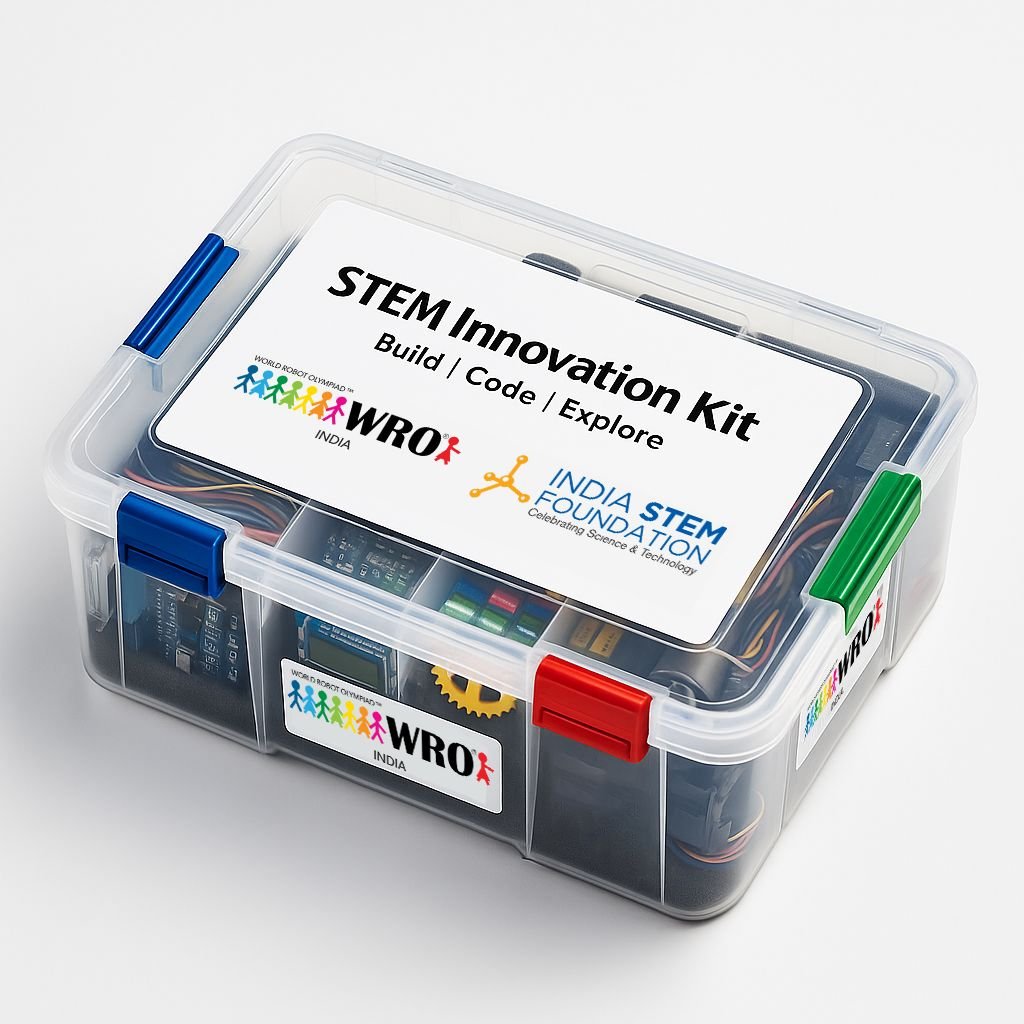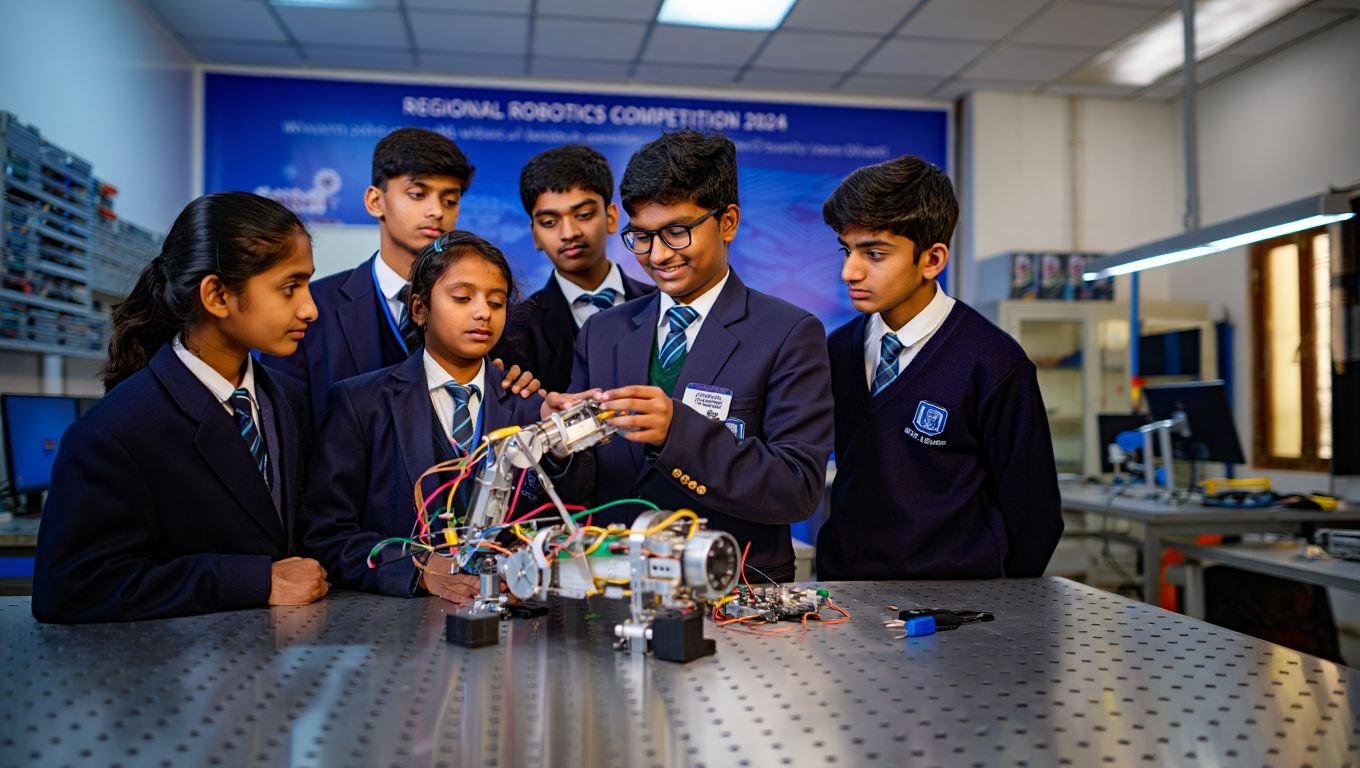In today’s rapidly evolving world, the STEM fields—science, technology, engineering, and mathematics—have become important catalysts for innovation and progress. The wide range of academic fields that make up STEM education has an impact on our daily lives in general, particularly in light of the rapid advancements in artificial intelligence. AI is changing the worldviews of professions. Science explores the fundamental ideas of nature, technology fosters innovation, engineering solves difficult problems, and mathematics logically underpins all of this. In the realm of robotics education, these disciplines converge to equip learners with the knowledge and skills necessary to thrive in a technology-driven society. Robotics in STEM education offers hands-on learning experiences that not only teach technical concepts but also cultivate problem-solving, creativity, and critical thinking skills. By engaging in robotics learning, students gain practical insights into the application of STEM principles, preparing them for future careers in fields such as automation, manufacturing, healthcare, and beyond. As robotics continues to play an increasingly prominent role in various industries, integrating robotics into STEM education becomes essential for fostering a workforce that is equipped to tackle the challenges and opportunities of the future.
Work and employment evolving with artificial intelligence
Artificial intelligence is revolutionizing work and employment, and its ability to automate processes is causing drastic changes in many industries. AI-based technologies are increasingly taking on manual tasks in sectors such as shipping, manufacturing, and services. This shift not only alters the nature of work itself but also demands skill development and creates new opportunities for specialized employment. Already, AI is reshaping customer service in real-time, transforming the workplace as we know it. Many companies have integrated AI-driven chatbots into their customer service platforms. Leveraging their natural cognitive capacities, these chatbots can swiftly understand client queries and provide prompt responses. As AI continues to advance, its impact on various aspects of work and employment will only become more profound, highlighting the importance of preparing individuals with the necessary skills to navigate this evolving landscape.
Robotic Education-Programming to Rescue
The study and use of robotics concepts, methods, and tools in educational contexts is called robotics education. In addition to integrating robotics into several STEM (science, technology, engineering, and mathematics) courses, it entails instructing students on the design, building, programming, and operation of robots. The goal of robotics education is to provide students with the information and abilities they need to comprehend and interact with robotics principles while encouraging their creativity, critical thinking, and problem-solving skills. Robotics education allows students to investigate the multidisciplinary nature of robotics and its applicability to real-world problems by offering experiential learning opportunities. People may become proficient in topics like coding, electronics, mechanical engineering, and cooperation via robotics learning, which prepares them for future professions in domains where robotics is important.
Programs in robotics education are organized classes or extra-curriculars that aim to teach students about the fundamentals, innovations, and uses of robotics. Typically, these programs involve students designing, constructing, programming, and operating robots as part of an experiential learning process. Education robotics programs can vary from basic courses in elementary school to sophisticated workshops or competitions in secondary and tertiary education establishments. These programs’ main goals are to increase students’ interest in STEM (science, technology, engineering, and mathematics) subjects, improve their technical proficiency, and build their capacity for critical analysis, problem-solving, and collaboration in a technologically advanced environment.
Skills like:
Problem-solving abilities: Taking part in robotics activities requires you to recognize obstacles, come up with solutions, and troubleshoot problems that come up during the design and operation of robots. Pupils hone their problem-solving skills by learning to examine issues, dissect them into manageable parts, and come up with original solutions.
Critical thinking: Students participating in robotics programs are encouraged to critically assess various problem-solving strategies. They gain the ability to evaluate the viability of their projects, decide with knowledge, and modify their plans in response to criticism and observation. This cultivates an analytical and inquiring mentality that is necessary for managing challenging real-world situations.
Logical reasoning: Students must follow logical procedures when building and programming robots. They gain knowledge on how to plan ahead, sequence tasks, and troubleshoot coding or design flaws. Students gain logical thinking abilities through this process, which is essential for comprehending cause-and-effect relationships and drawing logical conclusions.
There are many more skills that develop with robotic education of a person. Even other contribution factors are competition that help learn the application of skills in real life, That is why there are school based competition and national- international level competition like World Robot Olympiad.
The World Robot Olympiad provides a forum for young inventors and fosters teamwork, creativity, and problem-solving. WRO India cultivates an innovative culture that produces the next wave of technological leaders. Participating in these activities fosters creativity, critical thinking, and practical skills, which in turn shapes STEM education going forward and creates a trained labor force. These events not only provide exposure, networking opportunities, and personal growth, but they also validate the STEM accomplishments and talents of the participants. All things considered, there are many benefits for people and technology advancement by competing in robots and STEM competitions. WRO encourages participants’ creativity, problem-solving abilities, and collaboration through demanding competitions and engaging activities.
WRO seeks to build the next wave of technology leaders and innovators by emphasizing education and skill development. WRO India is essential in influencing how STEM education will develop in the nation by offering chances for learning and cooperation.
Robo Siksha Kendra, a CSR program by India STEM Foundation, is a platform devoted to robotic education. The goal of this program is to provide students with the information and abilities they need to prosper in a world that is becoming more and more automated.
To sum up, robotics education is essential to determining the direction of STEM (science, technology, engineering, and mathematics) education in the future. It fosters critical thinking, creativity, and problem-solving skills while providing students with the fundamental information and talents they need to function in a technologically advanced world. Robotics programs prepare students for professions in manufacturing, automation, healthcare, and other fields by providing them with practical experiences that go beyond typical classroom learning. In addition, robotics contests like the World Robot Olympiad provide young inventors a stage on which to display their skills, encouraging teamwork and motivating the following generation of tech leaders. The advancement of robotics calls for its further integration into STEM education in order to create a workforce prepared to take on new challenges and spur creativity.




